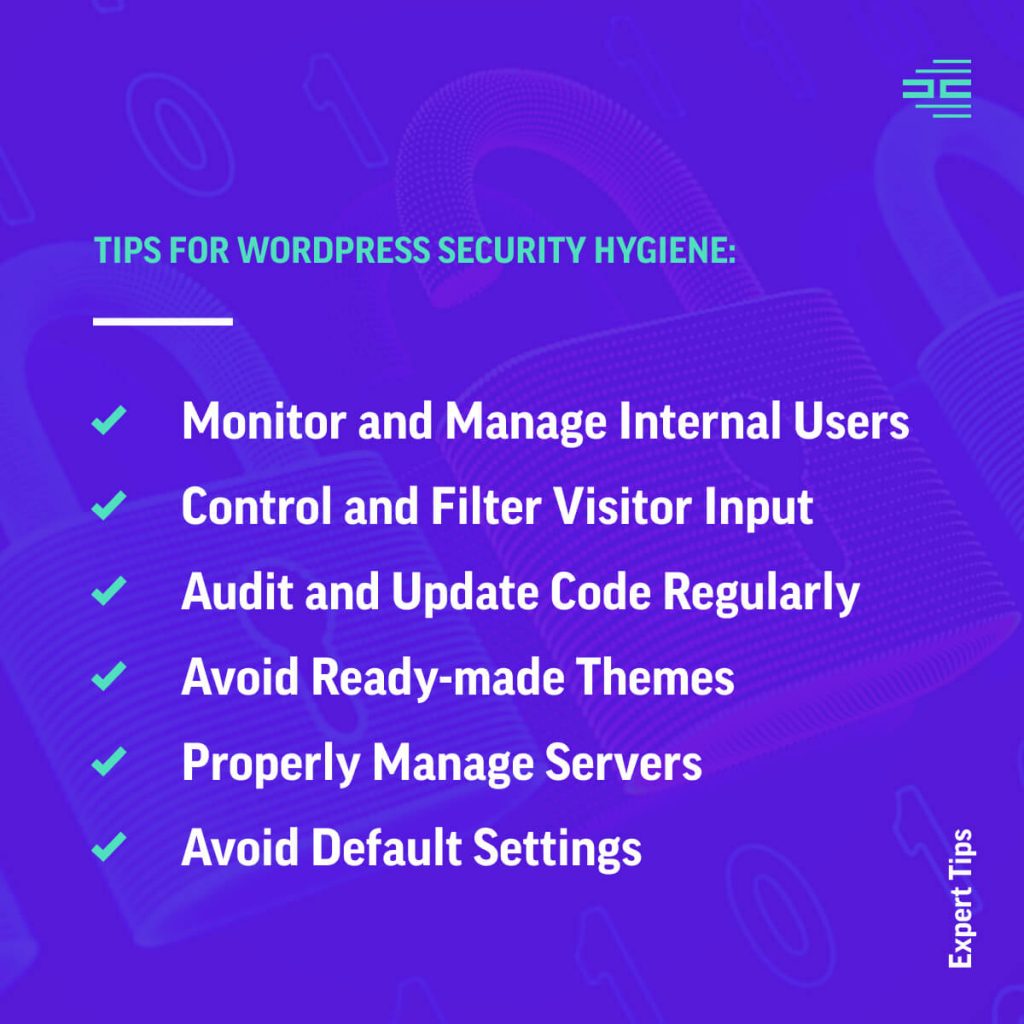In order to prevent or significantly hinder the chances of cyber attacks, it is important to practice good security hygiene. Because there are many different types of threats with attacks that can occur on different types of scales, security cannot be a one-time setup. It’s an ongoing process that requires regular maintenance for the greatest, up-to-date strength. Below are some areas to focus.
User Management
The first and possibly easiest way to practice good security hygiene is to closely monitor and manage your internal users. It’s easy to attack a website if a username or password gets into the wrong hands. Use secure passwords and change them often. Avoid generic usernames like “administrator” or “admin.”
Control Visitor Input
Filtering and managing input from visitors is important for preventing the likelihood of code/service attacks. Contact forms, sign-ups, and anything that a user can input data into is a possible vector for attack.

Audited & Updated Code
As part of the initial setup of a website, code should be carefully scrutinized. This is a key factor in the process of maintaining security.
Properly Managed Servers
WordPress Security goes hand-in-hand with a properly managed server. You need a professional host who truly cares about the health of your website and is able to work seamlessly with your development and operations teams.

Avoiding Default Settings
To add an additional layer of website security, update and avoid default settings whenever possible. The problem with keeping default settings is that it gives potential attackers yet another known element of your website, which can be exploited.
Post-Launch Considerations
Once your website has launched it is important to stay on top of security best practices. Consider setting up remote security scanning, 2-factor authentication, and a web application firewall. Always ensure that software and security updates happen regularly. Don’t forget – always maintain regular and complete backups.
If you’re interested in learning more about how we can keep your website secure, get in touch! We’re here to help.
